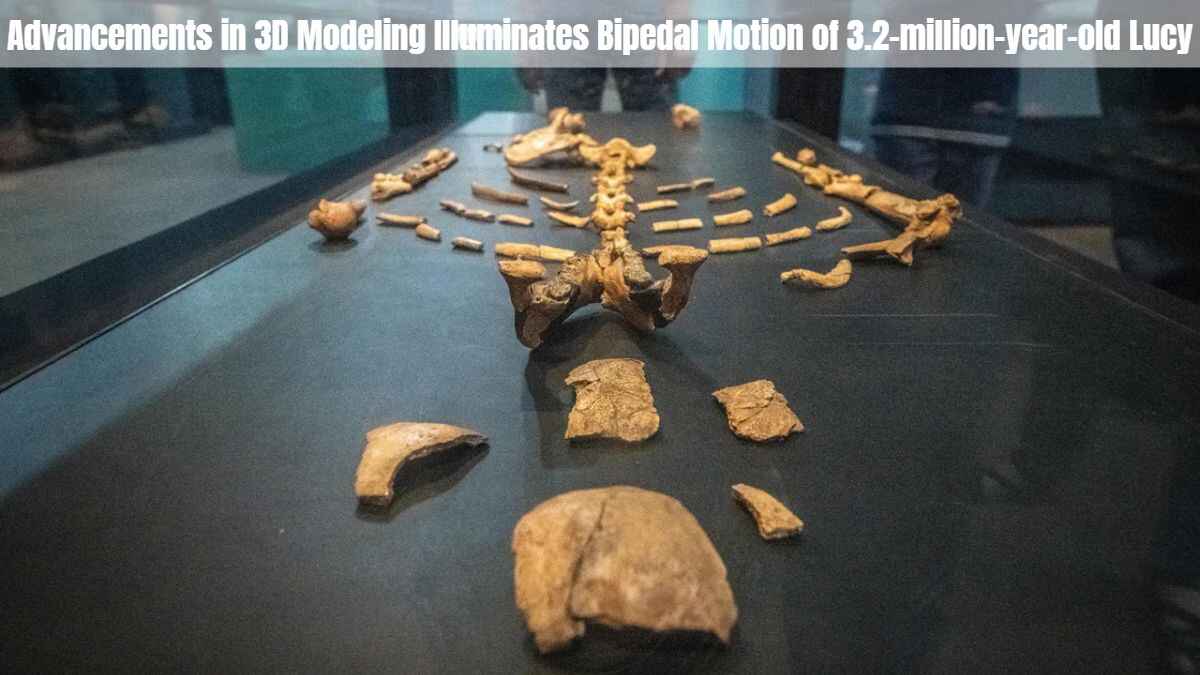Understanding how extinct species moved presents a major challenge for paleontologists. While skeletons offer valuable information, they rarely preserve the soft tissues crucial to reconstructing movement. However, recent advances in three-dimensional polygonal modeling, guided by image scanning data and muscle scars, have opened new avenues for reconstructing missing soft tissues.
This article explores the application of this technique to the specimen of Australopithecus afarensis AL 288-1, also known as ‘Lucy’, one of the most complete hominid skeletons, shedding light on the debate surrounding its bipedal movement.
Examination of Lucy’s fossil over the previous two decades has indicated that she and individuals of her species exhibited bipedal locomotion. However, Dr. Ashleigh LA Wiseman, lead author of the study and research associate affiliated with the University of Cambridge in the United Kingdom, sought to undertake a more comprehensive approach by reconstructing an unfossilized aspect of Lucy: her muscular system.
“The defining aspect of what makes us human is the ability to walk on two legs, but how and why this evolved has long been debated.”
Dr. Wiseman also adds: “With recent advances in computational modeling, it is now possible to investigate these questions. Of course, in the fossil record we are left with bare bones. But muscles animate the body: they allow you to walk, run, jump and even dance. So if we want to understand how our ancestors moved, we first need to reconstruct their soft tissues.”
Ability to stand upright
The study has revealed a meticulous reconstruction of the muscular configuration of Lucy’s pelvis and lower extremities, offering invaluable information about the movement capabilities of Australopithecus afarensis. The comprehensive analysis covers 36 muscles, meticulously mapped in their spatial distribution within each body segment.
The findings of this research, based on the examination of muscle leverage, indicate that Au. Afarensis possessed the ability to adopt an upright posture, suggesting potential for bipedal locomotion. However, the research also suggests that these early hominids were capable of a wide range of movements beyond usual terrestrial bipedalism, reminiscent of behaviors observed in chimpanzees and bonobos.

“I was very surprised to find that the knee extensors (those muscles that produce and maintain a straight knee when you stand) were so comparable to humans.” Wiseman said. “This means Lucy could stand up and probably walk as efficiently as we can.”
It is important to note that while the current results do not definitively confirm the effectiveness of bipedalism in Lucy, they do establish that upright walking was indeed a viable option. Going forward, employing the polygonal muscle modeling approach shows significant promise in the reconstruction of hominid soft tissues and provides crucial information on muscle configuration and filling.
For future studies delving into hominid muscle function, several key factors should be considered. First, researchers must pay due attention to the space occupied within a desired body segment, including a detailed analysis of muscle trajectories and masses. Second, the importance of digitizing the entire surface of the binding site cannot be underestimated, as this step allows for a more precise determination of a realistic centroid. Finally, it is imperative to consider the collective impact of all the muscles acting on a given segment of the body, rather than focusing solely on an individual muscle.

To facilitate further research and potentially assist in the teaching of human evolutionary anatomy, an interactive three-dimensional Autodesk Maya scene showing all musculature is provided with this document. This invaluable resource will serve as a valuable tool for future research efforts and may even contribute to improving the understanding of human evolution.
The insights gained in this study shed new light on the locomotion capabilities of Au. afarensis and emphasize the importance of examining muscle structure in our understanding of human evolution. With the advancement of muscle reconstruction techniques, we are poised to gain more insight into the soft tissue configurations of our early ancestors, unraveling the mysteries surrounding our evolutionary past.
READ ALSO | 100-million-year-old sauropod dinosaur bones found in Meghalaya
Categories: Optical Illusion
Source: ptivs2.edu.vn
